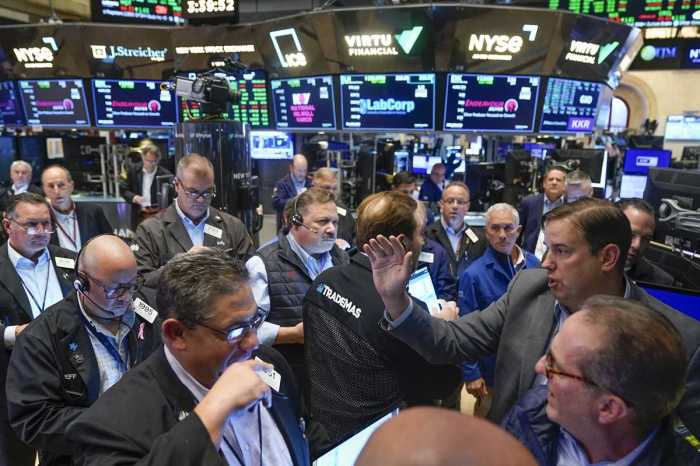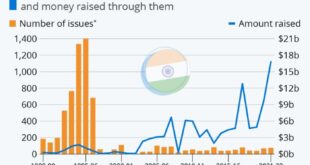European stocks consolidate after sharp gains; central banks in focus as investors take a breather after a recent surge in markets. The continent’s economic landscape, now navigating a delicate balance between growth and inflation, finds itself under the watchful eye of policymakers.
The recent gains, fueled by a combination of factors like easing inflation concerns and a resilient global economy, have given way to a period of consolidation, as investors await crucial signals from central banks.
The coming weeks will see major central banks, including the European Central Bank, the Bank of England, and the Federal Reserve, convene to discuss monetary policy. Their decisions, particularly regarding interest rate adjustments, will have a profound impact on the direction of European stock markets.
This period of consolidation offers a valuable opportunity for investors to assess the market’s underlying strength and anticipate the potential impact of these crucial policy pronouncements.
Market Overview
European stocks have experienced a period of consolidation after a recent surge in value. The sharp gains were fueled by a combination of factors, including optimism surrounding the global economic recovery, easing inflation concerns, and robust corporate earnings. However, the market is now taking a breather as investors assess the outlook for interest rates and the potential impact of geopolitical tensions.
Factors Contributing to Consolidation
The recent consolidation in European stocks can be attributed to several key factors.
- Elevated Interest Rates:Central banks around the world, including the European Central Bank (ECB), have been raising interest rates to combat inflation. This has led to increased borrowing costs for businesses and consumers, potentially slowing economic growth and impacting corporate profitability.
- Geopolitical Uncertainties:The ongoing war in Ukraine, coupled with rising tensions between China and the West, has created a sense of uncertainty in the global economy. This has made investors more cautious, leading to a pullback in risk assets, including European stocks.
- Valuation Concerns:After the recent rally, some investors believe that European stocks are now overvalued, especially given the potential for economic headwinds. This has prompted profit-taking and a move towards more defensive investments.
Current Market Sentiment
The current market sentiment is characterized by a mixture of caution and optimism. While investors are aware of the potential risks, they are also encouraged by the resilience of the global economy and the ongoing corporate earnings season. The market is likely to remain volatile in the near term as investors navigate these competing forces.
Central Bank Influence
The decisions made by central banks, particularly the European Central Bank (ECB), have a profound impact on European stock markets. Their monetary policies, including interest rate adjustments and bond-buying programs, directly influence borrowing costs, inflation, and overall economic growth, all of which affect investor sentiment and stock valuations.
Monetary Policy Comparisons
The monetary policies of major central banks, including the ECB, the US Federal Reserve (Fed), and the Bank of England (BoE), have diverged in recent years. The ECB has been more cautious in raising interest rates than the Fed and BoE, reflecting concerns about the eurozone’s economic outlook.
- The ECB’s gradual approach is driven by factors like the ongoing energy crisis and the war in Ukraine, which have created significant economic uncertainties in Europe.
- The Fed, on the other hand, has been more aggressive in tightening monetary policy, aiming to curb inflation, which has reached multi-decade highs in the US.
- The BoE has also raised interest rates but at a slower pace than the Fed, navigating a delicate balance between controlling inflation and supporting economic growth.
Upcoming Central Bank Meetings
Upcoming central bank meetings, particularly the ECB’s monetary policy decision in September, will be closely watched by investors. The ECB is expected to raise interest rates, but the magnitude of the increase and the future path of monetary policy will be crucial for European stock markets.
- If the ECB signals a more aggressive stance on tightening, it could lead to higher borrowing costs for businesses, potentially dampening economic activity and weighing on stock valuations.
- Conversely, if the ECB maintains a more accommodative stance, it could support economic growth and boost investor confidence, potentially leading to higher stock prices.
Key Economic Indicators
The performance of European stocks is closely tied to the health of the underlying economy. Key economic indicators provide insights into the current state of the economy and help investors gauge future prospects. These indicators act as a compass, guiding investor sentiment and influencing stock market movements.
Inflation Trends
Inflation is a key factor impacting investor confidence. High inflation erodes purchasing power, dampens consumer spending, and can lead to higher interest rates. Conversely, low inflation can signal a sluggish economy. Recent trends in inflation have been a significant concern for investors.
- In the Eurozone, inflation has remained stubbornly high, although it has shown signs of cooling down in recent months.
- The European Central Bank (ECB) has been aggressively raising interest rates to combat inflation, but it remains to be seen how effective these measures will be in the long run.
Unemployment Rates
Unemployment rates provide insights into the health of the labor market. Low unemployment rates indicate a strong economy with high demand for workers. Conversely, high unemployment rates can signal a weak economy and potentially lead to lower consumer spending.
- Unemployment rates in Europe have been relatively low in recent years, suggesting a robust labor market.
- However, concerns remain about potential job losses due to economic slowdowns and automation.
GDP Growth
Gross Domestic Product (GDP) growth measures the overall economic output of a country. Strong GDP growth indicates a healthy economy with increasing production and consumption. Conversely, weak GDP growth can signal a sluggish economy and potentially lead to stock market declines.
- GDP growth in Europe has been slowing down in recent quarters, reflecting the impact of the energy crisis, high inflation, and global economic uncertainties.
- Analysts are closely monitoring GDP growth figures to gauge the health of the European economy and its impact on stock market performance.
Sector Performance
The European stock market’s recent surge has been driven by a mix of factors, including strong corporate earnings, easing inflation concerns, and a more dovish stance from central banks. This rally has seen varying levels of participation across different sectors, highlighting the diverse dynamics at play within the European economy.
Technology Sector Performance
The technology sector has been a significant contributor to the overall market gains, fueled by a resurgence in investor appetite for growth stocks. Companies like ASML Holding, a Dutch semiconductor equipment manufacturer, and SAP, a German enterprise software giant, have seen their share prices climb significantly.
The sector’s performance is closely tied to the global economic outlook, as technology companies are often seen as beneficiaries of a strong and expanding economy. However, the sector remains vulnerable to changes in interest rates and investor sentiment.
Energy Sector Performance
The energy sector has also performed well, driven by high oil and gas prices. The war in Ukraine has disrupted energy supplies and created a tight market, boosting the profitability of European energy companies. However, the sector’s outlook is clouded by concerns about the potential for a recession, which could dampen energy demand.
The European Union’s plans to reduce its dependence on Russian energy imports could also impact the sector’s performance in the long term.
Healthcare Sector Performance, European stocks consolidate after sharp gains; central banks in focus
The healthcare sector has been more muted in its performance, with investors focusing on sectors with stronger growth prospects. However, there are some positive developments in the sector, such as the increasing demand for healthcare services in an aging population and the continued development of innovative treatments.
Pharmaceutical companies are also seeing strong growth, driven by the rising cost of healthcare and the development of new drugs.
Investor Sentiment
After a period of robust gains, European stocks have entered a phase of consolidation. While the recent rally has been fueled by optimism about the economic outlook and easing inflation concerns, investors are now navigating a landscape marked by uncertainty and caution.
Factors Influencing Investor Behavior
Investors are carefully weighing the implications of recent economic data and central bank pronouncements. While the initial euphoria surrounding the potential for a “soft landing” is fading, the market remains sensitive to any signs of a more pronounced economic slowdown.
- Interest Rate Expectations:The trajectory of interest rates remains a key driver of investor sentiment. While central banks have signaled a pause in rate hikes, the market is still grappling with the potential for further tightening and its impact on corporate earnings and valuations.
Find out about how Cargo Therapeutics CFO Anup Radhakrishnan sells shares worth over $40k can deliver the best answers for your issues.
- Geopolitical Tensions:The ongoing conflict in Ukraine and its ripple effects on global energy markets and supply chains continue to weigh on investor confidence.
- Inflation Dynamics:While inflation has shown signs of cooling, concerns persist about its stickiness and the potential for a resurgence.
Potential Risks and Opportunities
The current environment presents both risks and opportunities for investors.
- Risk of a Recession:The possibility of a recession, particularly in Europe, remains a key concern. A significant economic downturn could lead to a sharp correction in equity markets.
- Volatility:The current environment is characterized by heightened volatility, making it challenging for investors to navigate market swings.
- Sector-Specific Opportunities:While overall market sentiment is cautious, some sectors are expected to outperform others. For instance, the energy sector continues to benefit from elevated commodity prices, while the technology sector may face headwinds from slowing growth.
Technical Analysis

The recent surge in European stocks has left many wondering about the sustainability of these gains. Technical analysis offers valuable insights into the market’s direction, potential support and resistance levels, and overall momentum. By examining key indicators and charts, we can glean valuable information about the short-term and medium-term outlook for European equities.
Support and Resistance Levels
Identifying key support and resistance levels is crucial for understanding potential price reversals. Support levels represent price points where buying pressure is expected to outweigh selling pressure, preventing further declines. Conversely, resistance levels indicate price points where selling pressure is likely to dominate, potentially halting an upward trend.
- The Euro Stoxx 50 index, a benchmark for European blue-chip stocks, has found support around the 4,000-point mark in recent months. This level has been tested multiple times, indicating a strong foundation for potential further gains.
- On the other hand, the index faces resistance near the 4,300-point mark. This level has acted as a ceiling for the index in the past, and a break above this level could signal a sustained bullish trend.
Trend Lines
Trend lines are visual representations of price movements over time. They can be used to identify potential support and resistance levels and gauge the overall direction of the market.
- The Euro Stoxx 50 index has been trading within an upward channel since the beginning of the year. This indicates a bullish trend, with the upper trend line acting as a potential resistance level and the lower trend line acting as potential support.
- A break below the lower trend line would signal a bearish reversal, while a break above the upper trend line would confirm a sustained bullish trend.
Momentum Indicators
Momentum indicators measure the speed and strength of price movements. They can help identify overbought or oversold conditions and provide insights into potential trend reversals.
- The Relative Strength Index (RSI) is a popular momentum indicator that ranges from 0 to 100. Readings above 70 suggest overbought conditions, while readings below 30 suggest oversold conditions.
- The Euro Stoxx 50 index’s RSI has been hovering around the 60 level, indicating that the market is not currently overbought. However, if the RSI were to rise above 70, it could signal a potential correction in the near term.
Short-Term and Medium-Term Outlook
The technical indicators suggest that European stocks are currently in a bullish trend. However, the market is not without risks.
- The ongoing war in Ukraine and the potential for further economic sanctions on Russia could weigh on market sentiment.
- Rising inflation and interest rates could also impact corporate earnings and slow economic growth.
“While the short-term outlook for European stocks is positive, investors should remain cautious and monitor key technical indicators for signs of potential reversals.”
End of Discussion: European Stocks Consolidate After Sharp Gains; Central Banks In Focus
As European stocks consolidate after sharp gains; central banks in focus, investors are presented with a crossroads. The market’s recent momentum has been impressive, but the road ahead remains uncertain. The decisions made by central banks will shape the trajectory of the European economy and, consequently, the performance of its stock markets.
The coming weeks will be pivotal, as investors navigate this period of consolidation and prepare for the potential impact of central bank actions. The balance between growth and inflation will be the defining factor, and the decisions made by policymakers will have far-reaching consequences for both businesses and investors alike.
Question & Answer Hub
What are the key factors driving the consolidation phase in European stocks?
The consolidation phase in European stocks is being driven by a combination of factors, including investor caution following recent gains, anticipation of central bank decisions, and ongoing concerns about economic growth and inflation.
What are the potential implications of upcoming central bank meetings for European stock markets?
Upcoming central bank meetings could have a significant impact on European stock markets. If central banks signal a more hawkish stance on interest rates, it could lead to a decline in stock prices. Conversely, if they indicate a more dovish approach, it could support further gains in the market.
How are economic indicators like inflation and unemployment affecting investor sentiment?
Economic indicators like inflation and unemployment play a crucial role in shaping investor sentiment. High inflation erodes purchasing power and can lead to a decline in corporate profits, while low unemployment suggests a strong economy and can boost investor confidence.
 CentralPoint Latest News
CentralPoint Latest News




